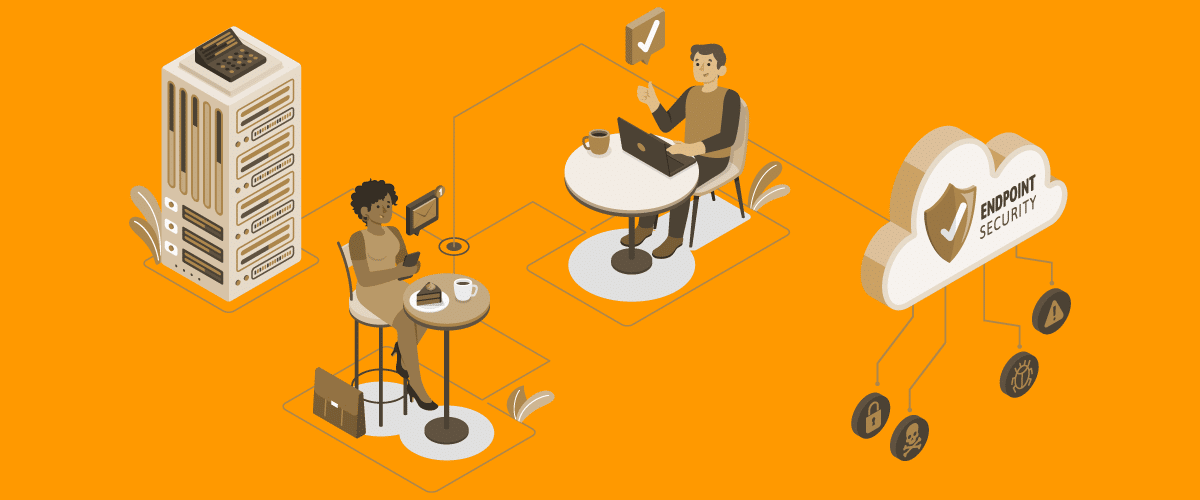
Internet Shield: Digital Defence Against Online Threats
In the digital age, online security has become a top priority for everyone, from individual users to large companies. This is precisely where the concept of Internet Shield, your protective barrier against the pitfalls of the web, comes into play. This advanced online security system is not just an option but a necessity in today’s digital landscape, where cyber threats are constantly evolving. Internet Shield represents the frontier of digital defence, offering state-of-the-art solutions to protect you from malware, phishing, ransomware and more. But what makes the Internet Shield concept so indispensable? And how can it guarantee your online security? This article will explore the facets of Internet Shield, demonstrating how it can be your most reliable ally in the fight against digital threats.
1. Historical Context and Necessity
The journey towards understanding the importance of Internet Shield begins with a dip into the past. Over the years, the digital world has witnessed an explosion of cyber threats of various kinds. From the first computer viruses to today’s sophisticated ransomware attacks, hackers have continued to evolve, finding new ways to breach online defences and exploit vulnerabilities for malicious purposes. The statistics are alarming: millions of attack attempts are made every day, aiming to steal sensitive data, compromise financial security and undermine digital trust.
In this scenario, Internet Shield emerges as an essential solution. Think of it as a silent guardian of your digital space, working tirelessly to detect, counter and neutralise threats before they can cause you harm. Internet Shield is not just a product; it is a comprehensive approach to security that combines the latest protection technologies with smart security practices, allowing you to surf, work and play online with peace of mind.
The need for Internet Shield becomes clear when you consider the impact of cyber attacks not only on individuals but on entire organisations. Data breaches can result in huge financial losses, reputational damage and even legal consequences. That is why Internet Shield is not a luxury but an indispensable requirement in today’s digital age, designed to provide robust and reliable protection that adapts to the changing threats of the cyber landscape.
As you read on, you will discover how a generic Internet Shield works, the benefits it offers, and how it can be implemented to ensure your digital security. Get ready to dive into the world of Internet Shield, your personal defence against online threats that allows you to surf with confidence and security.
>> FlashStart protects you from a wide array of threats and blocks access to malicious sites. Try it now: working with the internet has never been so secure!
2. What is Internet Shield?
By Internet Shield we mean the new frontier of computer security, a bulwark against the threats that infest the vast world of the Internet. But what lies behind this expression? Internet Shield is a complex of tools and technologies designed to protect you in real time against all sorts of digital dangers. From viruses to phishing attempts and ransomware attacks, Internet Shield acts as a protective shield that filters out potential threats, preserving your digital integrity.
Internet Shield’s strength lies in its ability to combine multiple layers of security: from the advanced firewall, which monitors and controls traffic entering and leaving your network, to data encryption, which ensures the security of your sensitive information. In addition, the introduction of multi-factor authentication systems adds an extra layer of protection, making it significantly more difficult for attackers to access your accounts and personal data.
>> FlashStart protects you from a wide range of threats and blocks access to malicious sites → Try it now
3. Benefits of Internet Shield
Adopting an Internet Shield system in your digital security strategy offers a range of unparalleled benefits. The first and most obvious benefit is protection from online threats, which translates into greater security for your personal and business data. With Internet Shield, you can surf the web, conduct online transactions and access your social media with the confidence that your information is safe from prying eyes.
Another key benefit is peace of mind. Knowing that you have a constant defence against the pitfalls of the web allows you to focus on your daily activities without the fear of running into scams or cyber attacks. In addition, using Internet Shield improves users’ confidence, whether they are surfing a company’s website or shopping online, knowing that security measures have been enhanced for their protection.
4. Implementation of Internet Shield
Implementing Internet Shield into your digital life or corporate infrastructure is a process that requires consideration and planning, but the steps to follow are accessible to all. For individuals, this may mean installing security software that incorporates Internet Shield functionality, ensuring that all devices used are protected. For businesses, it may require a more complex strategy, including updating security policies, training employees on online security best practices, and installing state-of-the-art security systems.
Choosing the right Internet Shield vendor is crucial, as you should look for solutions that offer excellent customer support, regular updates to counter new threats, and a configuration that suits your specific security needs. Ease of installation and user-friendliness are equally important, so that you can maintain your protection without having to be a technology expert.
Through these three key aspects, an Internet Shield emerges as an essential component of modern digital life, offering security, peace of mind, and a strong line of defence against increasingly sophisticated online threats. Its implementation represents a decisive step forward in ensuring that your online experience is safe and secure, now and in the future.
5. Case Study/Successful Examples
The effectiveness of an Internet Shield system is not just theoretical; there are numerous case studies and real-world examples demonstrating its significant impact in defending against online threats. Consider, for example, a small company that saw its systems armoured thanks to Internet Shield, thus foiling a potentially devastating ransomware attack. The software detected and isolated the infiltration attempt before it could encrypt the company’s data, safeguarding critical information and preventing operational disruptions.
Or, think of an individual who, thanks to the real-time protection offered by Internet Shield, avoided falling victim to a sophisticated phishing scam. The system identified and blocked a fraudulent email that appeared to come from a legitimate source, protecting the user from possible financial loss and identity theft.
These examples illustrate how Internet Shield is a valuable resource for anyone who wants to surf safely, demonstrating that with the right tools, it is possible to effectively defend against online threats.
6. Challenges and Criticalitie
Despite its considerable advantages, the implementation of Internet Shield also presents some challenges and critical issues. One of the main concerns is the balance between security and privacy. While Internet Shield is designed to protect users from threats, the data collection and analysis required to provide this protection may raise concerns about user privacy.
In addition, handling false positives represents another significant challenge. Although Internet Shield is designed to be as accurate as possible in detecting threats, there is always the risk that legitimate activities are mistakenly blocked, causing potential inconvenience to users.
These challenges require a holistic approach to security that considers not only the technical needs but also the ethical and social implications of using such technologies.
7. The Future of the Internet Shield
Looking to the future, Internet Shield will continue to evolve to deal with new and increasingly sophisticated cyber threats. Technological innovation, such as artificial intelligence (AI) and machine learning, will play a crucial role in enhancing Internet Shield’s capabilities, enabling it to predict and neutralise threats before they can manifest.
In addition, the integration of Internet Shield into a wider range of devices and platforms is expected to increase, extending protection not only to computers and smartphones but also to the Internet of Things (IoT), where security is often overlooked.
8. Conclusion
A generic Internet Shield is more than just a security tool; it is an indispensable ally in our digital daily lives, offering protection, peace of mind, and the freedom to explore the vast world of the Internet without fear. As online threats continue to evolve, Internet Shield will also adapt, ensuring that you can stay one step ahead of potential dangers.
Choosing to adopt Internet Shield represents an investment in your digital security, an essential step for anyone wishing to navigate with confidence in an increasingly connected world. Remember, in an age where digital threats are the order of the day, having Internet Shield by your side means having peace of mind, knowing that your digital life is protected by a robust and reliable defence.
You can activate the FlashStart® Cloud protection on any sort of Router and Firewall to secure desktop and mobile devices and IoT devices on local networks.







